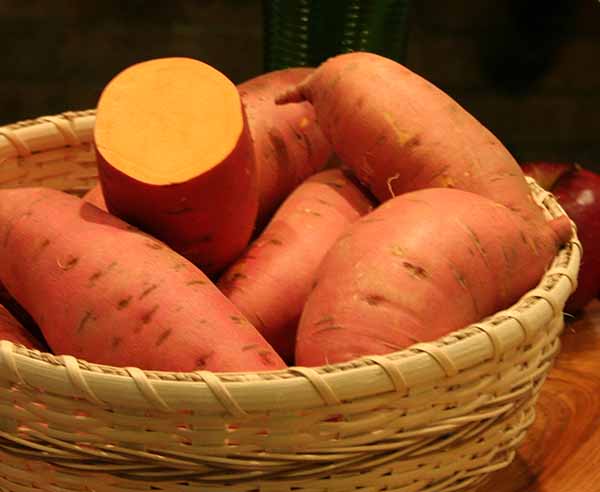 Orange fleshed sweet potatoes.
Orange fleshed sweet potatoes.
Romanos Opato a farmer in Kisumu has more than tripled income by diversifying his farming activities as he makes cakes, mandazis, and porridge using mashed orange fleshed potato as the main ingredient as opposed to earning from the sales of the crop alone previously.
He grows the crop on a two acre farm, harvest it and sell them as fresh produce to consumers who come to buy from the farm while others are sold in the open air markets in Kisumu. He has further diversed his farming activities to add value to his sweet potatoes.
“Making food products from the potatoes allow me to use all the harvested crops including the ones which are small in size and are undesirable for most buyers. This way, I ensure nothing goes to waste,” said Opato.
Currently a 98 kilogram bag of sweet potatoes is retailing at an average market price of Sh3,300. The highest price is Sh3,800 in Mombasa while the lowest is Sh2,000 in Kitale. However, with cakes, mandazis and porridge Opato is able to pocket about Sh6,600 more from each bag of sweet potato.
RELATED ARTICLE: Farmers speed sweet potato planting with multiplication system
The crop has emerged as the cheapest remedy to age old nutritional problems in the country like Vitamin A affects 85 per cent of Kenyan infants, leading to suppressed immune system and child blindness.
During January - September 2017 period, the average wholesale price of a 98kg bag of sweet potato was trading at an average of Sh3,421 up from Sh2,744 recorded in the same period the previous year. This was about 19.79 per cent increase according to Horticultural Crops Directorate ( HCD) statistics.
The crop has emerged as the cheapest remedy to age old nutritional problems in the country like Vitamin A affects 85 per cent of Kenyan infants, leading to suppressed immune system and child blindness.
Latest statistics from the International Potato Center indicate that orange fleshed sweet potato is an important source of beta-carotene, an indication of vitamin A. Just 125 grams of a fresh sweet potato root from most orange-fleshed varieties contains enough beta-carotene to provide the body’s daily need for vitamin A needs.
RELATED ARTICLE: Sweet potato becomes food of choice in arid areas
The heightened awareness campaign on the numerous benefits of the crop has done wonders for Opato. The orange-fleshed sweet potato, which he started growing in early 2011 through his farmer group, is his secret ingredient for the nutritious dishes described as ‘superior tasting’ by his customers.
Despite being an orphan from a poor background, Opato now runs a small restaurant where he works with his wife and two other employees. Together they make and sell dishes such as chapatis, mandazis, cakes, and porridge using mashed sweet potato as the main ingredient. Their popularity has driven his earnings through the roof.
“Since August 2011 when I started using the new sweet potatoes in my recipes, I began making a profit of Sh640 a bale up from the Sh190 I used to make before,” he said. “The meals are also very nutritious because the new orange-fleshed sweet potatoes contain vitamin A plus they also give the pastries a rich, appealing color.”
Opato was introduced to the new, vitamin-rich variety of sweet potato as part of the U.S. Government’s Feed the Future initiative that is working with the Government of Kenya to improve food security and nutrition in rural Kenya.
RELATED ARTICLE:Ex-Mukurweini sweet potato variety is good for food and fodder
“The kids really like the meals we give them,” said his wife, as their four year-old son happily nibbles on freshly prepared mandazis outside the restaurant.
Indeed his new business is not just affording him a better lifestyle but Opato believes that it has also positively impacted his family. “We are now much happier and healthier, and my wife and I never lack food for our two children,” he shares.
The initiative will help build the capacity of 7,800 smallholder farmers in Nyanza to grow the nutritious sweet potatoes that can help rural communities become more resilient and better able to survive common childhood diseases or during times of drought.
















Comments powered by CComment